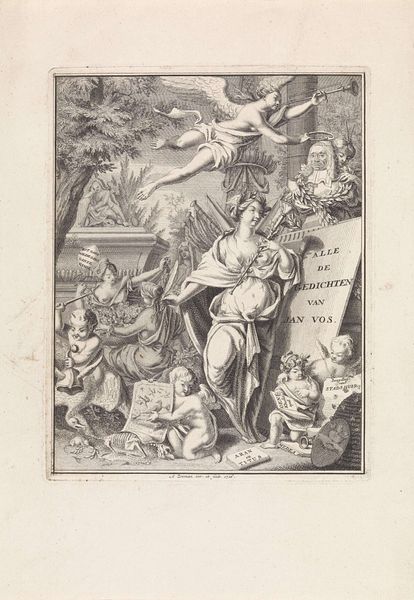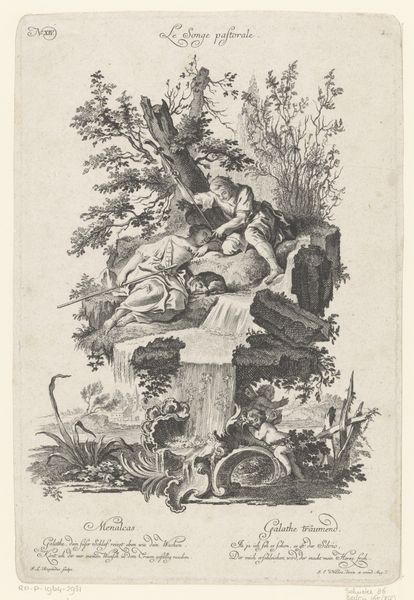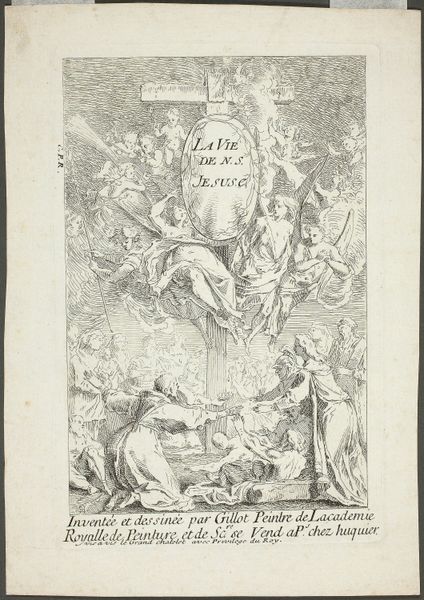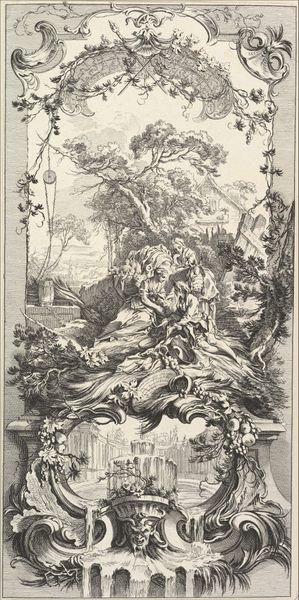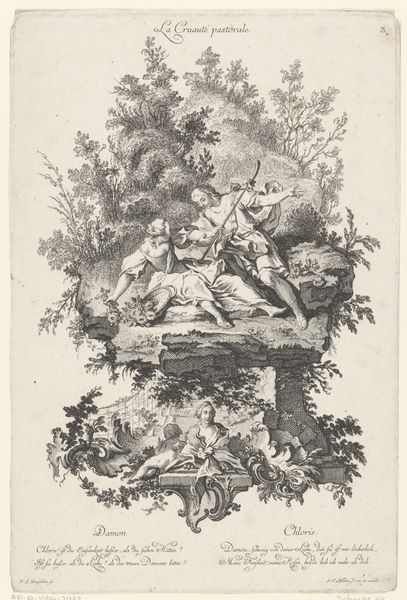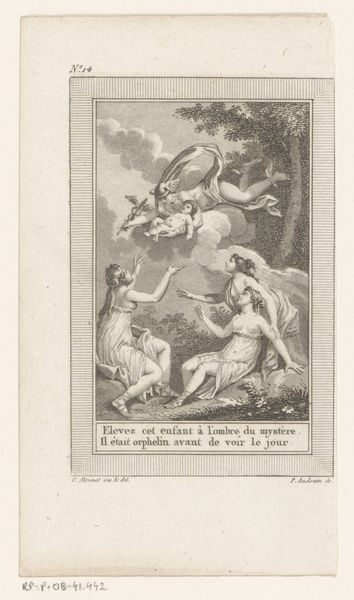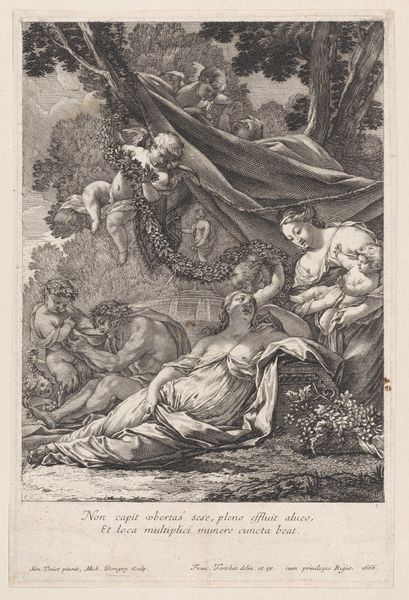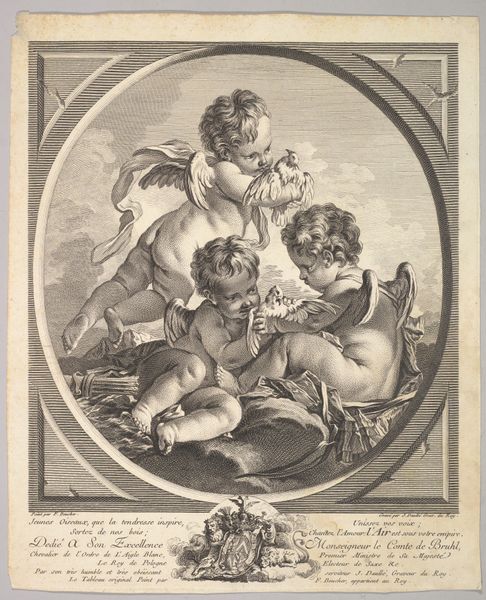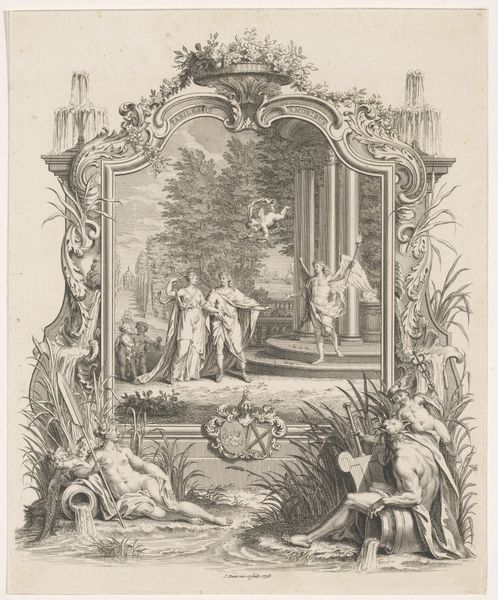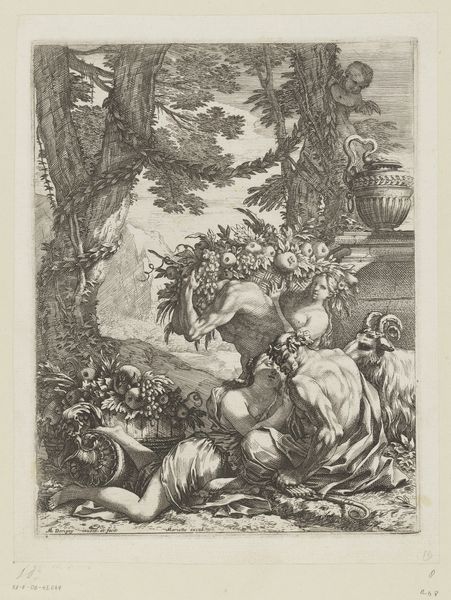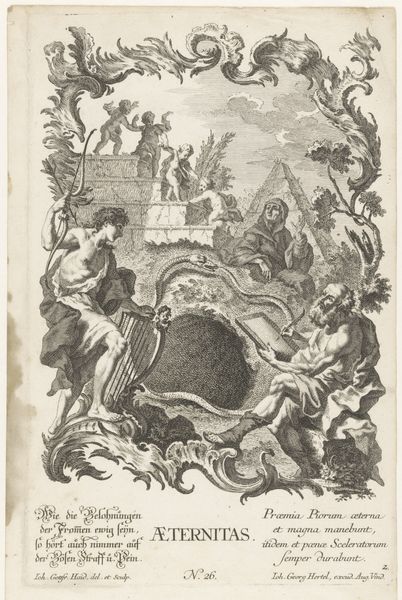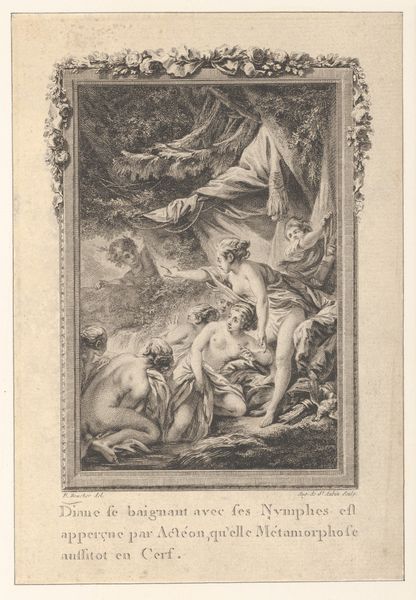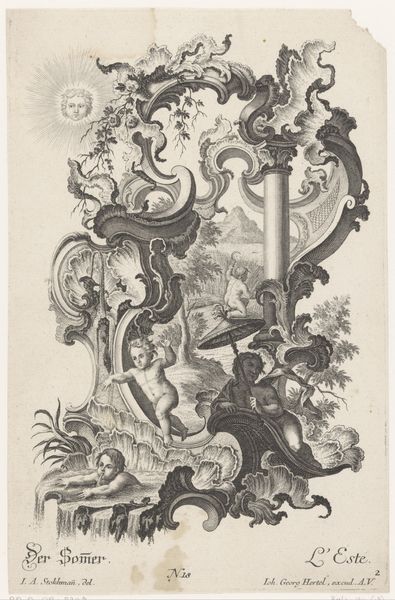
Ornament met duivel, Cerberus, vrouw met leeuwenpoten en een aap bij een skelet c. 1725 - 1750
0:00
0:00
gabrielhuquier
Rijksmuseum
drawing, ink, engraving
#
drawing
#
allegory
#
baroque
#
pen drawing
#
fantasy-art
#
figuration
#
ink
#
line
#
engraving
Dimensions: height 324 mm, width 242 mm
Copyright: Rijks Museum: Open Domain
This ornament was etched by Gabriel Huquier in France, sometime around 1742. It presents us with a riot of classical and allegorical figures. The devil, Cerberus, and a woman with lion's paws are not merely decorative; they embody the complex social and cultural values of the 18th century. Note how the image creates meaning through visual codes, cultural references, and historical associations. Huquier was part of a network that was both deeply embedded in the French court and critical of it. The "privilege du Roy" mentioned on the print provided legal protection for publishers, linking artistic production to the monarchy, but also making it dependent on the monarch's favor. Was Huquier commenting on the social structures of his time? Historians can use sources such as period pamphlets, engravings, and the records of institutions such as the Royal Academy to understand the making and meaning of art like this in its original context. The meaning of art is contingent on its social and institutional environment.
Comments
No comments
Be the first to comment and join the conversation on the ultimate creative platform.
